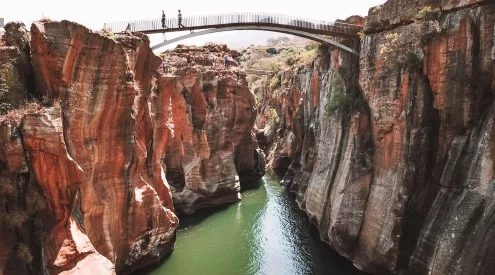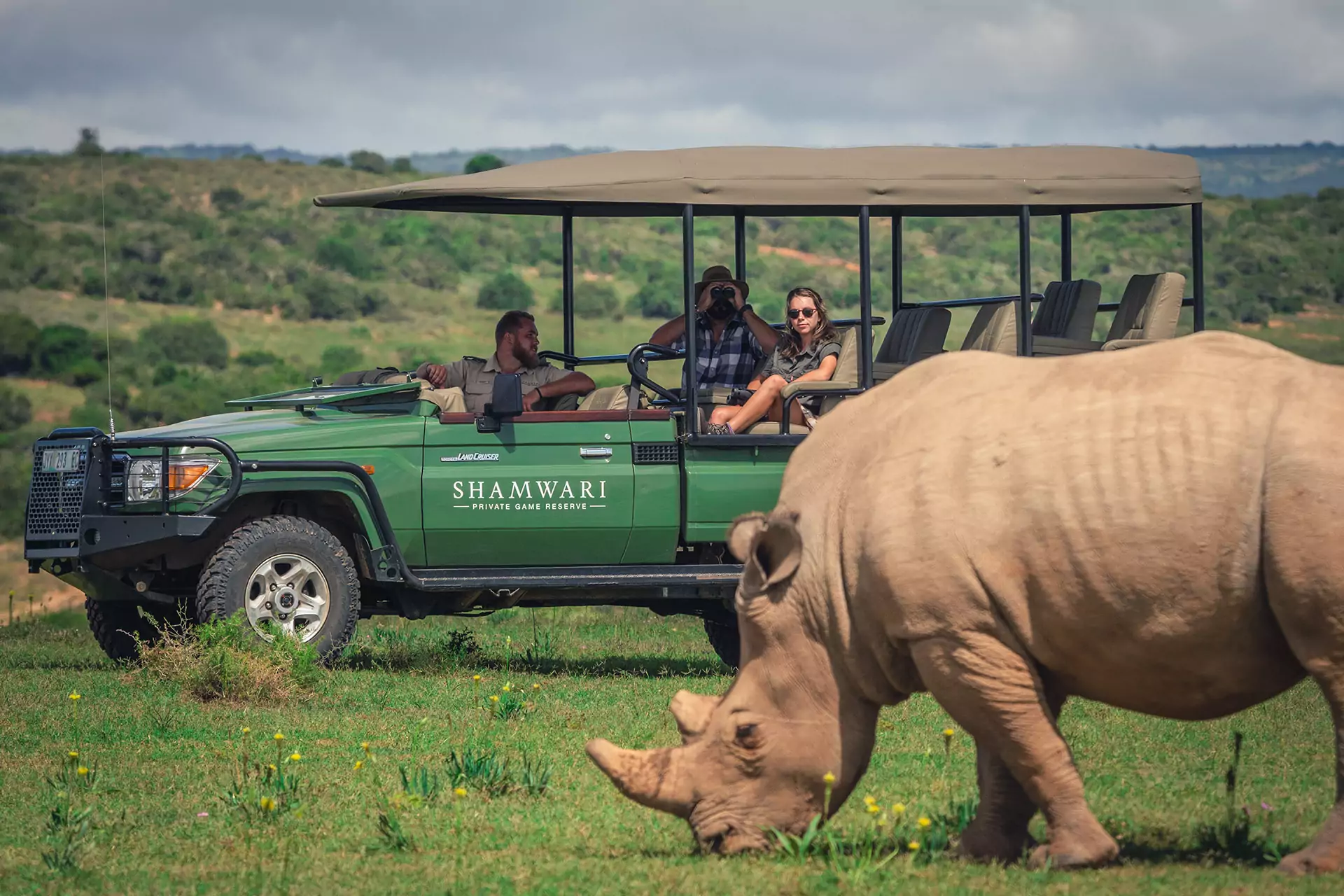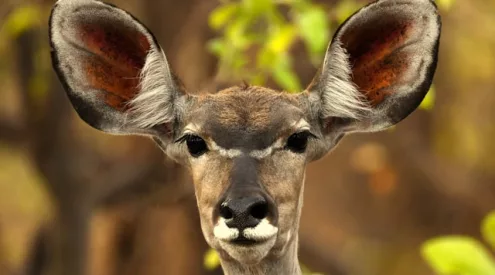Over the last year I’ve spent the majority of my time doing walking safaris. The general aim is to get closer to the bush and really appreciate the smaller things. But it also allows you to approach dangerous game, which is something that gives me an incredible kick.
It’s not because it’s risky: in fact, if done properly the risk can be all but negated. However, things can go wrong and for that reason there are five simple rules that we talk guests through before each walk.
Related: Tracking tips from a safari guide
15 things I learnt while becoming a safari guide
How to survive a walking safari
1. Single file

There’s certainly pressure when you’re up front leading a walking safari but it’s my favourite place to be. Photo by James Bailey.
Walk in single file – this means that both the lead and back-up rifle have gone before the guests and should spot any danger that may be ahead. It also means that we are seen as one mass unit rather than a herd that can easily be split. We limit our impact on the environment, only the lead guide and not a guest should fall down an aardvark hole, and any snakes should have moved out of the way.
Tip: don’t walk number three in line. The first person will wake the snake up, the second will annoy it and third person gets bitten.
2. Don’t get shot

A walking trail snakes through the lush green summer grass. Photo by James Bailey.
Stay behind the rifles at all times – I often get asked why we walk with both armed guides at the front. Simply put, this is where the danger is most likely to come from. With this in mind, it’s useful to have an extra pair of eyes and a rifle up front rather than at the back. However, what I actually tell guests is that there’s a good chance that the person at the back of the line will be picked off by a predator and it would be better that we didn’t lose one of the rifles.
3. Silence is golden

Striding out across the open floodplain in the Makuleke Concession in northern Kruger. Photo by James Bailey.
Walk in silence – I do enjoy the peace and quiet of the bush so this is a particular favourite of mine. The quieter you walk, the more likely you are to see the more elusive animals like leopard; and it’s important so that you can hear any danger that may be laying ahead.
Confession: once when I was walking as a back-up guide I did what can best be described as a “stomach rumble burp.” As soon as this I happened I apologised, but the lead guide didn’t hear me. Instead he had already jumped into action and went forward to check. By the time he came back it was too late to say that it had been my breakfast. The guests were already speculating what it may be, perhaps a buffalo or a leopard – no one had any idea it was me.
4. Listen and obey

Dangerous game on foot: a lioness on the prowl. Photo by James Bailey.
Obey my commands immediately – In the bush, a swift response can literally be a matter of life and death. Most of the time, guests do exactly what is asked of them. However, there are times when they don’t. This isn’t necessarily a case of them blatantly disregarding an order, they’re just not doing it with the urgency that is required. A lot of the time guests are trying to get a good look at what the danger may be. When this happens, they are put in even greater danger by ending up in front of the rifle.
5. Never run

Predator inspection – A small herd of buffalo come forward to investigate what we are, their necks outstretched to sniff the air. Photo by James Bailey.
Whatever you do, don’t run. Not even Usain Bolt at his top speed of 12.27 metres per second can outrun a lion at 22.2. Running in an encounter is the worst thing that can happen: even unthreatening situations can be escalated because as soon as somebody runs, it’s game on. Just think of a pet dog or cat. If you place a ball in front of them, they will sit there looking at it; but if you roll the ball they will chase it down and pounce on it.
This goes for elephants too, who are no slouches at 11.2 metres per second. Once, when tracking lion on foot, we were surprised by a breeding herd of elephants. There was nothing we could do to back out of the situation, so instead we simply sat down in the sand so as not to be seen as a threat. Through the whole encounter my heart was racing, not knowing how it would end. Two bull elephants approached us, one was curious and the other wanted to play. The playful chap came up to no more than 10 metres from us and started to kick sand. This was his invitation to us for a game of chase, which he normally plays with impala and warthog. We stood our ground which meant he lost interest and left us to our big adrenalin crash.
If you’re interested in training to be a safari guide, you can read all about my year in the Makuleke concession here.
I did my one-year professional field guide course with Eco-Training. It’s an unforgettable experience that I would recommend to everyone.




















